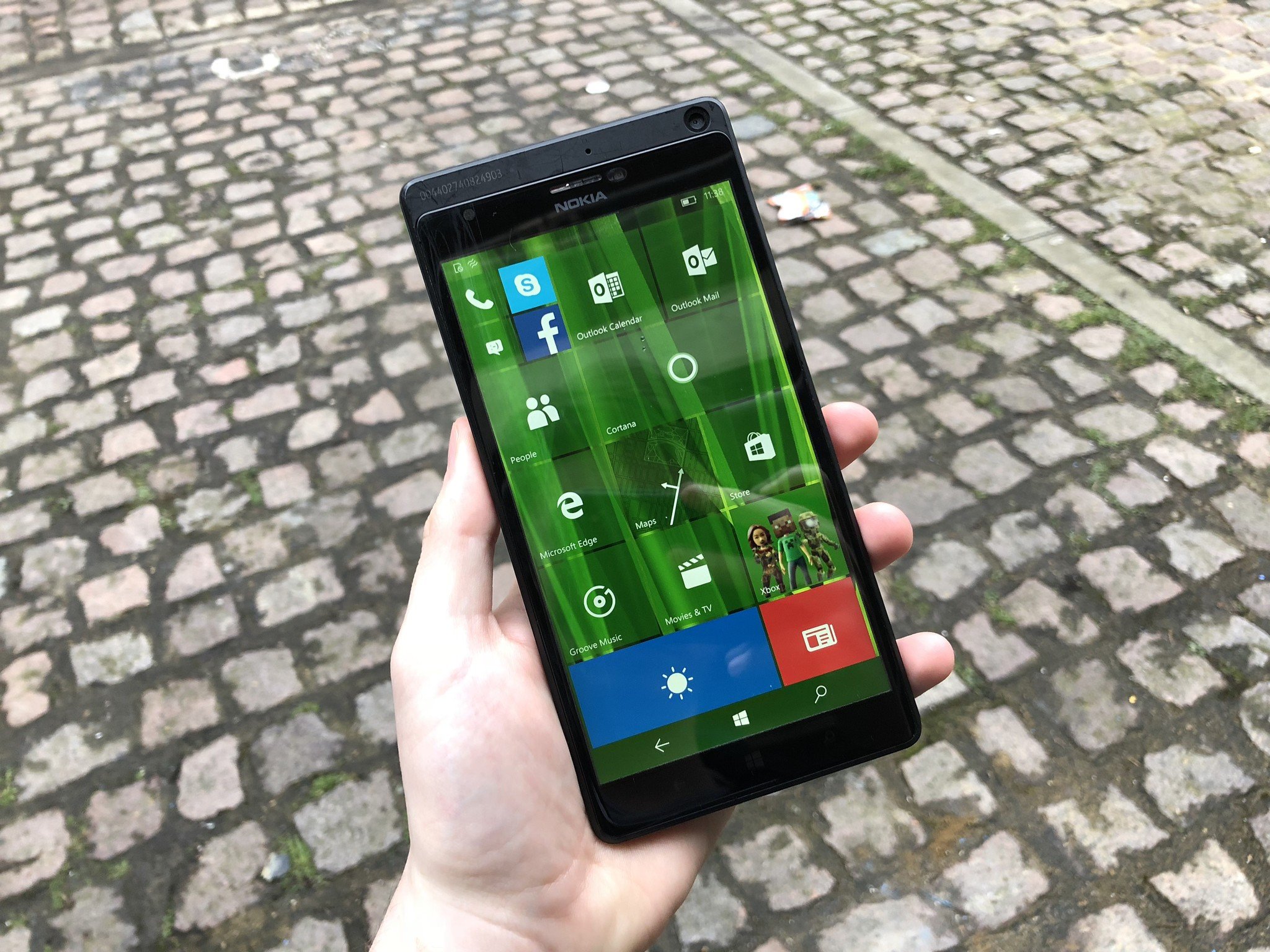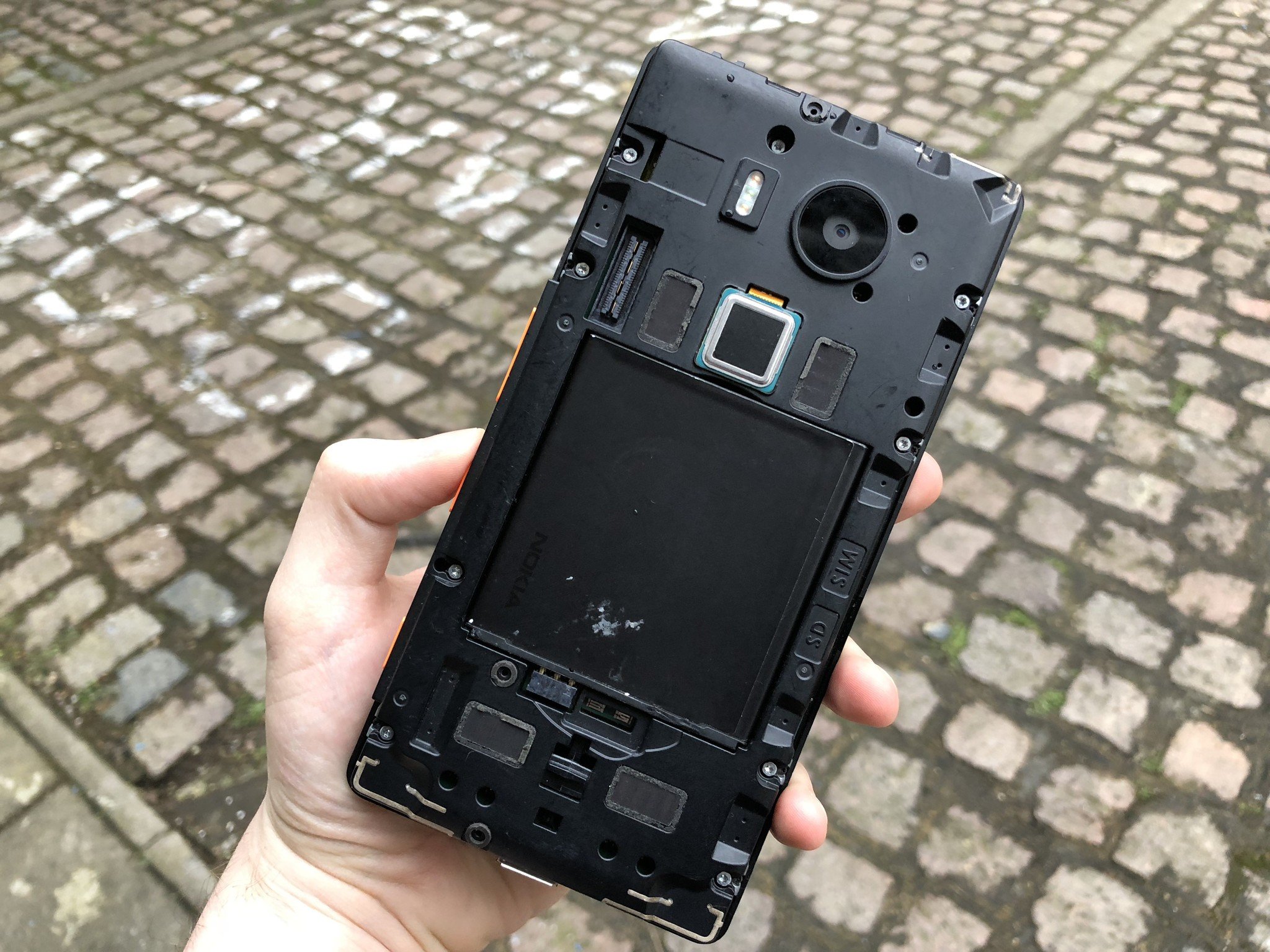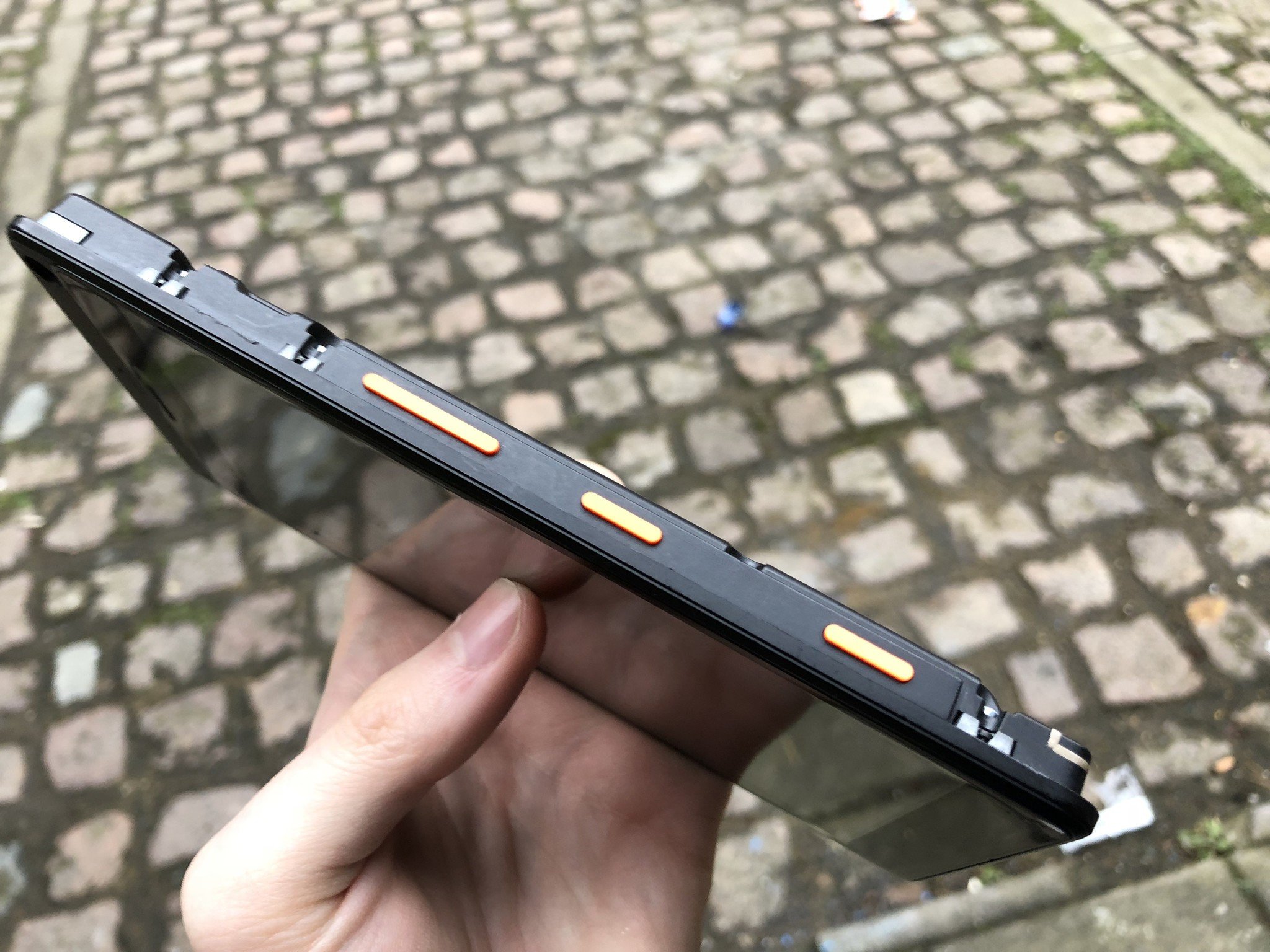Hands on with the engineering handset that helped build Windows 10 Mobile
Microsoft built a monster of a handset so that it could test Windows Phone builds. Here's what it looks like!

Back when Windows 10 Mobile first started development, fans were super excited for what the future held for Windows 10 in your pocket. Believe it or not, Microsoft had high hopes for Windows 10 on phones when it first started working on the platform. Unfortunately, due to developers not adopting UWP fast enough, and Microsoft's rather underwhelming hardware offerings with Windows 10 Mobile, the company ended up abandoning the platform, killing any future plans for Windows 10 on smartphones.
The underwhelming Lumia 950 and Lumia 950 XL were a real shame, if only because internally, Microsoft was building the platform out with support for much more than what the Lumia 950 series offered. When Windows 10 Mobile development first kicked off, the Lumia 950 didn't exist, so instead Microsoft used an engineering handset called the "RX-130," an odd Frankenstein of a smartphone that incorporated different components from different Lumia handsets, and even had features that the Lumia 950 didn't.
The RX-130 has been briefly spotted in a few on-stage demos that Microsoft did back in 2015 when demoing new Windows 10 Mobile features in development, but outside of that, not much is known about the Frankenstein handset. We've managed to get out hands on an RX-130 handset, and it's not pretty.
The RX-130: What is it?

The handset, known as the RX-130 or "Hapanero" is an engineering device that Microsoft used to build and test Windows Phone 8.1 and Windows 10 Mobile builds throughout development before the Lumia 950 existed. It's not a device that Microsoft ever intended to sell, and was primarily built just for employees who needed to test and debug OS builds and features that existing Windows Phone devices didn't support at the time. Since it wasn't intended for public consumption, the design is a little ... rough.
The device features the face of a Lumia 1520 housed in a custom body, bright orange volume, lock and camera buttons, the battery from a Lumia 830, a fingerprint reader, and the camera from a Lumia 950 XL. The display is a 6-inch 2K LCD panel, with 4GB RAM and a Snapdragon 810 on the inside powering everything. It's a Lumia 1520 with a Lumia 830 battery and the camera and specifications from a Lumia 950 XL. See what I mean when I refer to it as the "Frankenstein" phone?
This is the device Microsoft used to build out features like Continuum, USB-OTG support, Windows Hello, support for the Snapdragon 810, and even pen support before the Lumia 950 was available. Although the Lumia 950 technically existed internally throughout 2015, most engineers likely wouldn't have been allowed access to those prototypes until way later into the development of the device. This is where the RX-130 came in.
The rear-facing fingerprint sensor isn't something we ever saw launch on a Lumia handset, which is a shame. The RX-130 also had support for pens, which when loaded with the correct software would work much like pen support on a normal Windows PC. In fact, early Lumia 950 prototypes also featured pen support, but this was pulled toward the end of development, as were many other features.
Get the Windows Central Newsletter
All the latest news, reviews, and guides for Windows and Xbox diehards.
In fact, Microsoft also used the RX-130 to build and test support for Windows 10 Mobile on the ARM64 architecture. The Snapdragon 810 supports ARM64, and so did Windows 10 Mobile, however, Microsoft never released a handset with Windows 10 Mobile running in ARM64. Interestingly, someone was recently able to get full Windows 10 on ARM running on an RX-130, because the processor supports it.
The RX-130 is an interesting look into what Microsoft was anticipating Windows 10 Mobile to be. The engineering prototype has all the bells and whistles, many of which never actually made it into a shipping product. Unfortunately, the Lumia 950 launched with an underwhelming selection of features, and Microsoft's inability to commit to Windows 10 Mobile after 2016 was the final nail in the coffin for fans of Windows in your pocket.

Hopefully, Microsoft gives its next attempt at Windows 10 on mobile devices a proper chance. With rumors of Andromeda launching as soon as this year, it shouldn't be long before Microsoft launches its next attempt.

